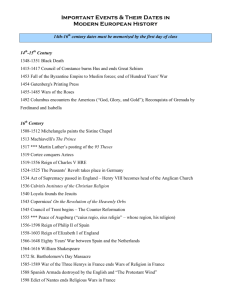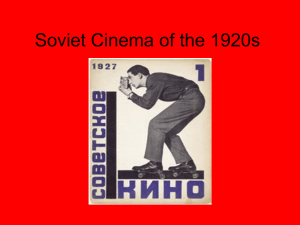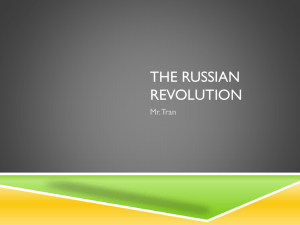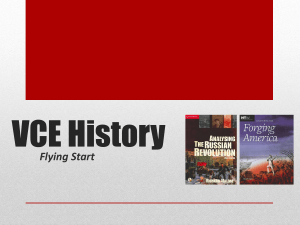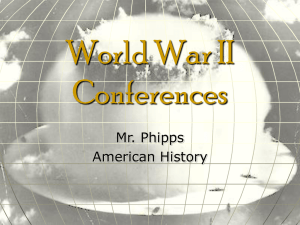Unit 6: Crises and Achievements
advertisement
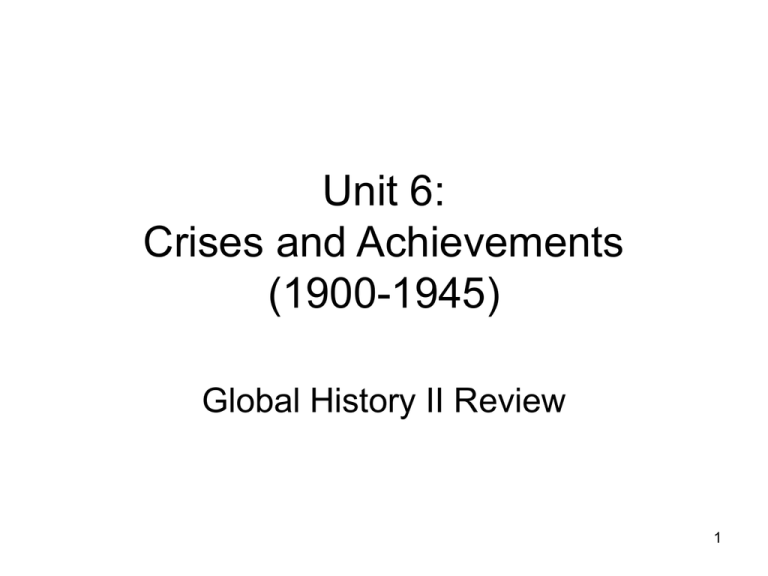
Unit 6: Crises and Achievements (1900-1945) Global History II Review 1 Science and Technology • Medical advancements are made • Standard of living improves – Better wages for workers and conditions • Increase in population (healthier/ safer) • New Scientific theories developed – Radioactivity (Nuclear energy) – Einstein and Freud 2 World War I • Causes (1914-1918) – Nationalism- pride in one’s country – Militarism- increase in militaries to protect – Imperialism- conquering territories – Alliances- joining forces incase of attack • War began when Arch Duke was killed – Balkans were a “powder keg” of tension and started the war by each country joining in 3 World War I • Alliances formed across Europe – Central Powers (Triple Alliance) • Germany, Austria-Hungary, and Ottoman Empire – Allied Powers (Triple Entente) • Britain, France, Russia, Later Italy, Japan, USA • Industrialized warfare – Trench warfare- dug trenches to fight from – New weapons- machine gun, tank, submarine, airplane, and poison gas 4 World War I • Turning Point of the war when USA joins • Russia withdrew from war (Revolution) • Costs of the war – Tremendous loss of life (more than 8 million) – Economic losses forced Germany to pay reparations for the war (Treaty of Versailles) – Formation of the League of Nations to try and prevent future wars from happening 5 Revolution in Russia • Causes of the Revolution (1917) – Czar Nicholas was an autocratic ruler • Harsh treatment of the people, suppressed reform – Peasants were unhappy with conditions – Diversity among the Russian people inspired nationalism among populations – Revolution of 1905- protesters were attacked – People wanted to get out of World War I 6 Revolution in Russia • Bolshevik Revolution (Communists) – Provisional government was slow to change – Communists promised Peace, Bread, & Land • Lenin Rules Russia – Communists overthrew provisional gov. – Russia drops out of World War I – Civil war between Reds and Whites (czar) – New Economic Policy- governemnt controlled nearly everything in the Soviet economy 7 Revolution in Russia • Joseph Stalin takes over Soviet Russia – Totalitarian dictator launched Great Purge – Russification- promoted Russian culture for everyone living in Russia (non-Russians) – Five-Year Plans to build industry and increase agricultural output – Collectivization created large farms – Forced Famine- starved peasants in Ukraine – Modernized Russia to compete with West 8 Between Wars • Treaty of Versailles – Harsh punishment for Germany • Loss of territory, military restrictions, war guilt – Formation of the League of Nations • Designed to prevent future aggression and wars • Weakened due to refusal of USA to join • Collapse of Empires – Austria-Hungary broke up into several nations – Ottoman Empire lost war and broke up 9 Between Wars • National movements emerged – Turks under Kemal Ataturk Westernized – Iran under Shah Reza Khan Westernized – Pan-Arabism- Arab nations wanted to be free of foreign (European) rule – Zionism- push for a Jewish state in Palestine – Indian Nationalism- wanted independence • Gandhi used civil disobedience to win rights 10 Between Wars • Chinese Nationalism – Economic collapse in China led to revolt – May Fourth Movement- modernize China by turning to the West – Communists emerged (Mao’s Long March) – Civil War between Communists & Nationalists • Women’s Suffrage movement gains vote – Democratic nations give women right to vote 11 Between Wars • World Wide Depression (1929) – Economic problems in Europe from WWI – Interdependency of world economies – Great Depression: collapse of economy – Banks and business closed – People lose faith in capitalism and democracy • Rise of Fascism – Rule a people by dictatorial government 12 Between Wars • Rise of Fascism – Italy: Mussolini promised better economy and gain territory expected after WWI – Germany: Weimer Republic failed (democracy – Inflation created economic problems and gave rise to Hitler – Hitler promised to regain lost territory, fix the economy, rebuild the military – Anti-Semitism rose (hatred toward Jews) 13 Between Wars • Japan becomes a militaristic power in Asia – Depression ended movement toward democracy in Japan – Need for raw materials drove Japan to imperialism and militarism in Pacific region – Expanded into China and Manchuria – Anti-Western feelings – Left League of Nations 14 World War II • Causes of World War II (1939-1945) – Aggressive nature of Italy, Germany, Japan • Japan invaded and took territory in China • Italy attacks Ethiopia (L-N does nothing) – German Aggression: • Rebuilds military, took Rhineland, Austria, and part of Czechoslovakia – Appeasement (give in to an aggressor) • Policy followed by Europeans to prevent war • Start of War: Germany invades Poland ’39 15 World War II • Axis Powers gained territory rapidly – Germans used Blitzkrieg “Lighting War” • Turning points in the war – US enters the war after Pearl Harbor attack – Battle of Stalingrad turned back Germans – Invasion of Normandy by Allies (D-Day) – Battle of Midway in the Pacific 16 World War II • Holocaust: Genocide against Jews – Hitler’s “Final Solution” killed 6 million Jews • World War II Ends – Germany was overrun by Allies and gave up – Americans dropped two atomic bombs on Japan to end the war in the Pacific • Technology of World War II – Jet planes, bomber planes, atomic weapons 17 World War II • Impact of World War II – 75 Million people died world wide in the war – Many cities and economies were in ruins – War Crime trials such as Nuremberg Trials – Soviet Union occupied Eastern Europe – United Nations was formed to discuss world problems and develop solutions over war 18


